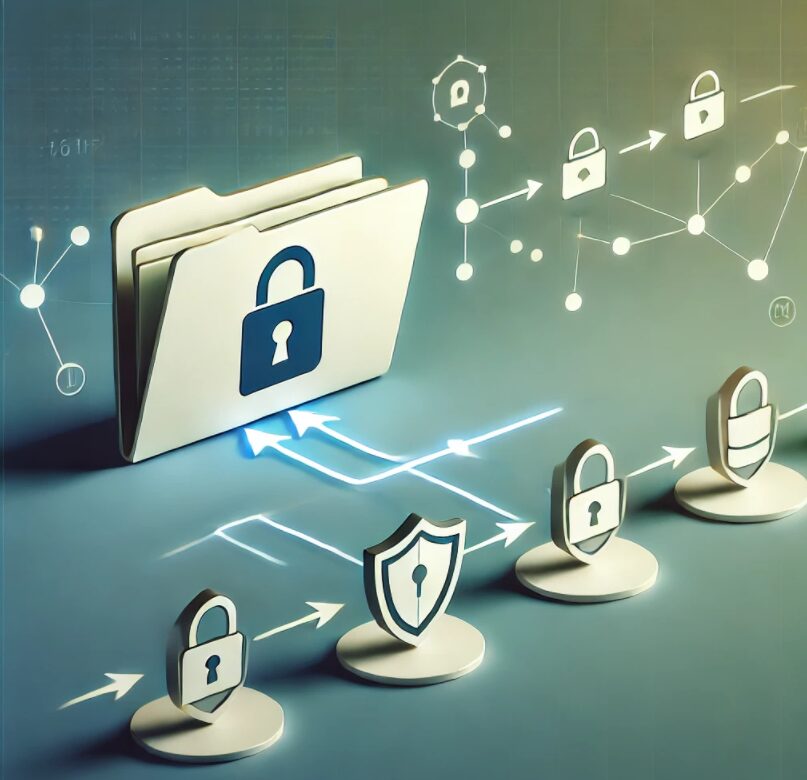The Department of War’s New PQC Mandate
The Department of War’s New PQC Mandate
What Agencies Must Do Now and How TYCHON Quantum Readiness Delivers Post-quantum readiness has officially moved from planning to execution. This week, the Department of War (DoW) CIO issued a new memorandum, “Preparing for Migration to Post-Quantum Cryptography,” directing departments to accelerate their transition to quantum-resistant cryptography and to immediately identify and inventory all cryptography used across DoW information systems. This directive aligns with OMB M-23-02, NSM-10, and the Quantum Computing Cybersecurity Preparedness Act, reinforcing a clear requirement: agencies cannot…
Read MoreRC4: Discovering Hidden Cryptographic Vulnerabilities in Enterprise Environments
RC4: Discovering Hidden Cryptographic Vulnerabilities in Enterprise Environments
The Challenge A major security blind spot exists in modern Windows environments: Rivest Cipher 4 (RC4) encryption remains embedded in NTLMv2 authentication protocols across Active Directory infrastructures, including the latest Windows Server 2025 domain controllers. While maintained for compatibility and Kerberos fallback scenarios, RC4 presents significant security risks that conventional security tools often miss. Why Traditional Tools Fall Short Standard vulnerability scanners frequently overlook RC4 as a weakness because Microsoft hasn't fully deprecated it from their Operating Systems (OSs). Since…
Read MoreThe Boundaries of Packet Sniffing
The Boundaries of Packet Sniffing
Why Sniffing Falls Short in Revealing Cryptographic Secrets In the ever-evolving world of cybersecurity and network analysis, packet sniffers have long been go-to tools for peering into the digital veins of our networks. They capture the raw ebb and flow of data packets, offering insights into traffic patterns, protocol behaviors, and potential anomalies. But when it comes to uncovering cryptographic information—such as encryption keys, certificates, algorithms in use, or even encrypted payloads—packet sniffing hits a wall. This blog dives deep…
Read MoreHidden Secrets: The Challenges of Cryptography Discovery in CI/CD Pipelines
Hidden Secrets: The Challenges of Cryptography Discovery in CI/CD Pipelines
In the ever-evolving landscape of software development, where code flows through continuous integration and continuous deployment (CI/CD) pipelines like water through a river, one critical element is often overlooked: cryptography. As developers, security engineers, and cryptography enthusiasts, we know that cryptographic implementations in source code can be both a fortress and a vulnerability. Discovering these implementations—whether they’re robust libraries like OpenSSL or custom-rolled algorithms—is essential for ensuring compliance, mitigating risks, and maintaining the integrity of our systems. Yet, this discovery…
Read MoreNetwork-Only Monitoring Falls Short
Network-Only Monitoring Falls Short
Recent Symmetric Encryption Changes Highlight the Need for Holistic Cryptographic Monitoring Network-only monitoring solutions cannot effectively track enterprise-wide cryptographic operations. Comprehensive discovery of cryptographic assets requires visibility into both network traffic and endpoint activities. Network monitoring provides valuable insights into data in transit, but it cannot detect cryptographic operations that occur locally on endpoints. This limitation is particularly evident with symmetric encryption algorithms like Advanced Encryption Standards (AES), which are frequently used for file encryption and secure data storage before…
Read MoreImplementing Quantum-Safe Cryptographic Discovery in Your CI/CD Pipeline – Part 8 of 8
Implementing Quantum-Safe Cryptographic Discovery in Your CI/CD Pipeline – Part 8 of 8
Welcome to the final installment in our series on quantum-safe cryptography! In this post, we'll explore how to integrate cryptographic discovery methods into your CI/CD pipeline, focusing on repository events like commits and pull requests. The Quantum Threat As quantum computers evolve, they pose a significant threat to many of our current cryptographic algorithms. Notably, RSA and ECDSA, which form the backbone of much of our digital security, are vulnerable to quantum attacks. It's crucial to identify and replace these…
Read MoreDiscovering Quantum-Vulnerable Cryptography in CI/CD Pipelines: IDE Plugin Approach – Part 7 of 8
Discovering Quantum-Vulnerable Cryptography in CI/CD Pipelines: IDE Plugin Approach – Part 7 of 8
Welcome to the seventh installment of our comprehensive series on cryptographic discovery and quantum readiness. In this article, we'll explore how to create a discovery method for identifying quantum-vulnerable algorithms directly within your Integrated Development Environment (IDE) as part of your CI/CD pipeline. This approach aligns with NIST's recommendations for post-quantum preparedness and brings cryptographic validation right to the developer's fingertips. Introduction As quantum computing looms on the horizon, the need to secure our codebases against quantum threats becomes increasingly…
Read MoreIdentifying Quantum-Vulnerable Algorithms in Windows and Linux Executables: A Comprehensive Guide – Parts 5-6 of 8
Identifying Quantum-Vulnerable Algorithms in Windows and Linux Executables: A Comprehensive Guide – Parts 5-6 of 8
Welcome to the fifth and sixth installments of our comprehensive 8-part series on discovering cryptographic usage in your organization and cataloging it according to risk. This combined guide focuses on validating the discovery of quantum-vulnerable algorithms in executable files on both Windows 11 clients and Linux systems (specifically Ubuntu 22.04 Server Edition). Introduction As quantum computing technology advances, the threat to traditional cryptographic algorithms like RSA and ECC grows more significant. The National Institute of Standards and Technology (NIST) has…
Read MoreDiscovering and Validating Quantum-Vulnerable Algorithms in Windows and Linux: Parts 3-4 of 8
Discovering and Validating Quantum-Vulnerable Algorithms in Windows and Linux: Parts 3-4 of 8
Welcome to the most recent installment in our comprehensive 8-part series on discovering cryptographic usage in your organization and cataloging it according to risk. In this article, we'll focus on validating the discovery of quantum-vulnerable algorithms in non-executable files on both Windows-based and Linux-based operating systems. Introduction As quantum computing races towards practical reality, the cryptographic foundations of our digital world face an unprecedented threat. Quantum computers have the potential to break widely-used algorithms like RSA, DSA, and elliptic curve…
Read MoreEnhancing Cybersecurity – CARAF & Quantum-Safe SSH: Part 2 of 8
Enhancing Cybersecurity – CARAF & Quantum-Safe SSH: Part 2 of 8
In today's rapidly evolving digital landscape, staying ahead of cybersecurity threats is crucial. This blog post explores two key topics: the Crypto Agility Risk Assessment Framework (CARAF) and methods to validate quantum-safe algorithms in SSH protocol version 2. Crypto Agility Risk Assessment Framework (CARAF) As organizations face increasing cybersecurity challenges, the need for adaptable and robust cryptographic solutions has never been greater. CARAF offers a structured approach to support rapid adaptations of new cryptography with minimal organizational impact. CARAF…
Read MoreIf you have an idea about a blog topic that you would like to read, please contact media@tychon.io!











